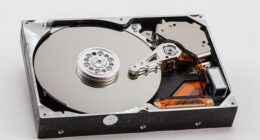Analogue signals can transmit large amounts of data with high accuracy, but they are susceptible to interference and noise. Digital signals, on the other hand, offer higher quality transmissions with less susceptibility to noise but require more bandwidth.
Analogue Signals
Analogue signals are continuous and can take on any value within a certain range, making them suitable for transmitting data in its original form. Examples of analogue signals include sound waves and light waves. These types of signals have been used for centuries to transmit information, from smoke signals to telegraphs.
One advantage of analogue signals is that they are able to carry an infinite amount of detail due to their continuous nature. This makes them ideal for transmitting information such as music or voice communication where subtle changes in tone or pitch need to be conveyed accurately.
However, one disadvantage of analogue signals is that they are easily susceptible to interference from other sources, such as electromagnetic fields or physical obstructions like buildings or trees. This can result in distortion or noise being introduced into the signal which can affect its quality.
Despite this drawback, many pieces of equipment still use analogue signalling today such as vinyl records and analog radios. While digital technology has largely replaced these forms of media in recent years, there is still a strong following among those who appreciate the warm and rich sound quality that analogue provides.
Digital Signals
Digital signals are a type of signal that is composed of binary data, meaning it consists only of zeros and ones. Unlike analogue signals, which can take on any value within a range, digital signals have discrete values.
One major advantage of digital signals is their ability to transmit information over longer distances without losing quality. Digital signals can also be easily manipulated and processed using computer algorithms.
Another benefit of digital signals is their resistance to noise interference. Since the signal is made up of distinct values, it’s less likely to be disrupted by outside factors such as electromagnetic interference or other sources of noise.
Digital technology has revolutionized many industries, including telecommunications and entertainment. Today, most electronic devices use some form of digital signal processing technology.
While there are some disadvantages associated with digital communication methods such as increased complexity and higher costs for equipment and infrastructure; the benefits they offer in terms of clarity and reliability make them an attractive option for many applications today.
Pros and Cons of Analogue Signals
Analogue signals are continuous and can have an infinite range of values. One advantage of analogue signals is that they offer a more natural representation of the real world, making it easier to understand. They are also less susceptible to interference since they do not require any conversions from one form to another.
However, one disadvantage of analogue signals is that their quality degrades over long distances due to noise and attenuation. Additionally, analogue systems can be expensive as they require a lot of hardware components such as amplifiers and filters.
Another issue with analogue signals is that they are vulnerable to environmental factors such as temperature changes or electromagnetic interference which can cause distortions in the signal.
Despite these drawbacks, there are still many applications where Analogue Signals continue to be preferred over digital ones. For example, music recording studios prefer using reel-to-reel tape recorders instead of digital audio workstations because tapes provide a warmer and richer sound quality than digital recordings.
While analog technology may not always be the most practical solution for certain applications today, it remains an important part of our history and will continue to play a role in shaping our future technological advancements.
Pros and Cons of Digital Signals
Digital signals are an essential part of modern technology, allowing us to transmit and store data with greater accuracy and efficiency than ever before. However, like any technology, digital signals also have their pros and cons.
One significant advantage of digital signals is that they can be transmitted over long distances without losing signal quality. This makes them ideal for use in telecommunications networks, where they enable high-speed Internet connections and reliable telephone service.
Another benefit of digital signals is their resistance to noise interference. Unlike analogue signals which often become distorted by external sources such as radio waves or electromagnetic fields, digital signals can be encoded with error-correcting codes that help ensure the integrity of the information being transmitted.
However, there are also some downsides to using digital signals. One potential disadvantage is that they require more processing power than analogue systems. This means that devices must work harder to encode and decode the data being transmitted – a process which can lead to increased energy consumption.
Another drawback of digital signals is their dependence on hardware components such as microprocessors and memory chips. If these components fail or become outdated, it may be necessary to replace entire systems rather than just replacing individual parts – a costly proposition for businesses relying on this technology.
While there are both advantages and disadvantages associated with using digital signals in our daily lives, it’s clear that this technology has revolutionized the way we communicate and share information around the world.
What are 3 examples of equipment that use analog signals?
(Image by Republica from Pixabay )

Analog signals are used in various equipment and devices, such as televisions, radios, and old-school record players. These types of equipment use continuous electrical signals to transmit information.
One example of an equipment that uses analog signals is a microphone. Microphones pick up sound waves from the environment and convert them into electrical signals, which can then be amplified or recorded.
Another example is the thermostat in your home. Analog thermostats measure the temperature using a metal coil that expands or contracts based on changes in temperature. The coil then moves a needle across a gauge to indicate the current temperature.
Analog cameras also use analog signals to capture images. Film cameras rely on chemicals reacting with light to create an image on film while older video cameras recorded images onto magnetic tapes.
While digital technology has surpassed many analog systems due to its reliability and efficiency, there are still some industries where analog technology remains prevalent due to cost-effectiveness or other factors such as audio recording studios for their warm audio quality.
What are 3 examples of equipment that use Digital signals?
(Photo by Ali Pli on Unsplash )

Digital signals are utilized in a wide range of modern equipment, including computing devices, telecommunications networks and medical instruments. Here are three examples of equipment that use digital signals:
Digital Cameras: The images captured by digital cameras are composed of small pixels that convert light into electrical charges, which are then translated into binary code using an analog-to-digital converter (ADC). This digital information is stored on the camera’s memory card as a series of 1s and 0s.
Smartphones: Today’s smartphones rely heavily on digital signal processing to function properly. From voice calls to internet browsing, all data transmitted through smartphones is converted to a digital format for transmission over cellular or Wi-Fi networks.
GPS Devices: Global Positioning System (GPS) technology uses satellites orbiting the Earth to determine precise location coordinates for navigation purposes. The GPS receiver in your car or smartphone translates these satellite transmissions into a set of numerical values that can be displayed on-screen as interactive maps.
It’s clear that the increasing prevalence of digitization has transformed how we interact with technology today – from capturing memories with our cameras to navigating our daily commutes with GPS-enabled devices!
Featured Image By – Gerd Altmann from Pixabay








